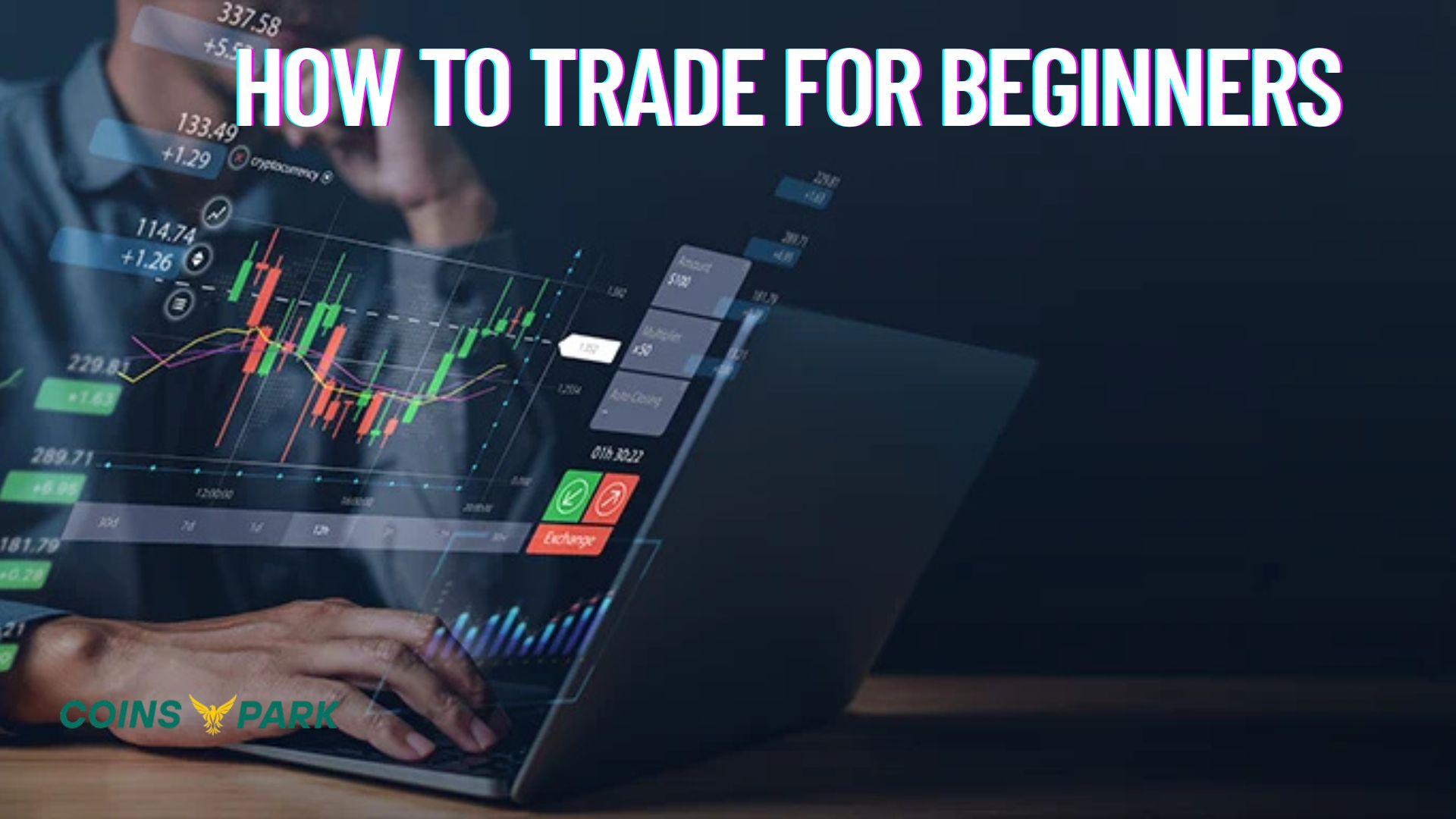How to Trade for Beginners: Although it can be an exciting method to increase your wealth, trading can be intimidating for newcomers. Anyone may begin trading and progressively gain confidence with the correct information, attitude, and dedication. This article explains the fundamentals of trading for beginners, including how it works, the equipment you’ll need, and easy steps to get started.
What Is Trading?
Trading involves buying and selling financial assets—such as stocks, cryptocurrencies, foreign currencies (forex), or commodities—to generate a profit. Unlike long-term investing, trading is more short-term and requires a closer watch on the markets.
There are several types of trading:
- Day trading: Purchasing and selling within the same day.
- Swing trading: Holding trades for days or weeks.
- Scalping: Making quick trades for small profits, often within minutes.
- Position trading: Having trades for longer periods, even months.
As a beginner, swing trading or position trading is usually more manageable than fast-paced day trading.
Understand the Markets.
Before placing any trades, it’s essential to learn how markets work. Each market—stocks, crypto, forex—has different rules, risks, and trading hours.
- Stock market: You trade shares of companies (like Apple or Tesla) through stock exchanges.
- Crypto market: You trade digital assets like Bitcoin or Ethereum on cryptocurrency exchanges. Crypto trades 24/7.
- Forex market: Involves trading one currency for another, such as USD for EUR. It operates 24 hours a day during weekdays.
Do some research and pick one market to focus on when starting.
Learn Basic Trading Concepts.
Some key concepts to understand before you begin:
- Buy (Long) vs. Sell (Short): You can make money by buying low and selling high (long), or selling high and buying low (short).
- Bid and Ask Price: The bid is the price buyers are willing to pay; the ask is the price sellers want.
- Spread: The difference between the bid and ask prices. Lower spreads are better for traders.
- Stop-loss: An automatic order to sell if a price drops too far, limiting your loss.
- Take-profit: An automatic order to sell when a price hits your target profit level.
Mastering these basics will help you manage risk and make smarter decisions.
Choose a Reliable Broker or Exchange.
To trade, you’ll need an account with a broker (for stocks or forex) or a cryptocurrency exchange (for digital coins). Choose a platform with:
- Easy-to-use interface
- Low fees
- Good educational tools
- Strong security features
Examples include:
- Stocks: TD Ameritrade, eToro, Robinhood
- Crypto: Binance, Coinbase, Kraken
- Forex: OANDA, IG, XM
Make sure the platform is regulated and reputable in your country.
Use a Demo Account First.
Almost all trading platforms offer demo accounts. These let you practice with fake money in real market conditions. Use this to:
- Understand how the platform works
- Practice placing orders
- Test strategies without risking real money
Spend at least a few weeks practicing on a demo before trading with actual funds.
Develop a Simple Trading Strategy.
Successful traders follow a plan. As a beginner, start with a simple strategy like:
- Trend-following: Buy when the price is rising consistently; sell when it begins to decline.
- Support and resistance: Identify price levels where the asset frequently bounces or reverses.
- Breakout trading: Enter trades when the price breaks above a key level, expecting further movement in the same direction.
Use charts and basic indicators like moving averages, RSI (Relative Strength Index), and MACD to assist your decisions.
Keep Learning and Improving.
Trading is a skill that improves over time. Read books, watch videos, join trading forums, and follow experienced traders. Some great beginner books include:
- “Trading for a Living” by Dr. Alexander Elder
- “**A Beginner’s Guide to Forex Trading** by Matthew Driver
- “Crypto Trading for Beginners” by Frank Richmond
Keep a trading journal to record your trades, why you took them, and what you learned. This will help you grow faster.
Conclusion.
Although it takes patience, practice, and education, trading may be a very effective way to make money. Prior to investing real money as a newbie, concentrate on mastering the fundamentals, utilizing demo accounts, and developing a sound strategy. Begin modestly, control your risk, and commit to ongoing development. Trading may be a fulfilling and lucrative endeavor with patience and self-control.




